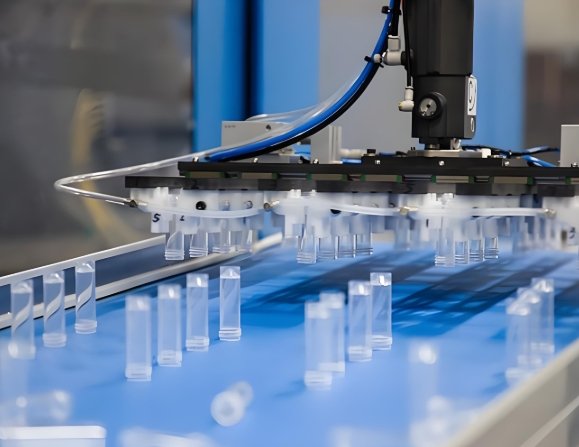
Medical devices must be safe for the human body. Medical injection molding relies on biocompatible plastics to ensure safety. A skilled mold maker selects the right materials. These plastics must meet strict healthcare standards.
1. What Are Biocompatible Plastics?
Definition of Biocompatible Plastics
Biocompatible plastics do not cause harm to living tissue. They are safe for medical use. They resist bacteria, chemicals, and body fluids.
Why Biocompatibility Matters
Medical devices come in direct contact with the body. Poor-quality materials can cause reactions. Biocompatible plastics prevent these risks.
2. Common Biocompatible Plastics in Medical Injection Molding
Polycarbonate (PC)
- Strong and impact-resistant.
- Used in surgical instruments and diagnostic devices.
Polypropylene (PP)
- Resistant to chemicals and heat.
- Common in syringes and medical containers.
Polyethylene (PE)
- Flexible and durable.
- Found in prosthetics and tubing.
Acrylonitrile Butadiene Styrene (ABS)
- Tough and lightweight.
- Used in housings for medical equipment.
Polyether Ether Ketone (PEEK)
- High strength and chemical resistance.
- Ideal for implants and surgical instruments.
Silicone
- Soft and flexible.
- Common in catheters and seals.
3. Benefits of Using Biocompatible Plastics
Safety for Patients
These plastics do not release harmful substances. They ensure patient safety in medical applications.
Durability and Strength
Medical devices require long-lasting materials. Biocompatible plastics resist wear and tear.
Resistance to Chemicals and Sterilization
Medical tools must withstand sterilization. These plastics remain stable under extreme conditions.
Lightweight and Cost-Effective
Compared to metal, plastics are lighter. They reduce costs in production and transportation.
4. How a Mold Maker Ensures Quality in Medical Injection Molding
Material Selection
A mold maker selects the best biocompatible plastic. This ensures the device meets medical standards.
Precision Molding
Medical devices require accuracy. A skilled mold maker ensures tight tolerances in production.
Testing and Validation
Medical devices go through strict testing. Biocompatibility, durability, and sterility are checked.
5. Applications of Biocompatible Plastics in Healthcare
Surgical Instruments
Biocompatible plastics create strong and lightweight tools. They improve precision in surgery.
Medical Implants
PEEK and silicone are ideal for implants. They are safe for long-term use in the body.
Diagnostic Devices
Polycarbonate and ABS are used in diagnostic tools. They ensure clear and accurate test results.
Drug Delivery Systems
Syringes and IV components use polypropylene. These plastics prevent contamination.
Medical Packaging
Sterile packaging protects devices. Medical-grade plastics keep equipment safe from bacteria.
6. The Medical Injection Molding Process
Step 1: Material Selection
The right biocompatible plastic is chosen. A mold maker considers strength, flexibility, and sterility.
Step 2: Mold Design
The mold is precisely designed. It ensures consistency in each medical device.
Step 3: Injection Molding
The plastic is melted and injected into the mold. It then cools and hardens into the final shape.
Step 4: Quality Control
Each part is tested. This ensures safety, strength, and accuracy.
7. Challenges in Using Biocompatible Plastics
Strict Regulatory Requirements
Medical plastics must meet FDA and ISO standards. Compliance is essential.
Cost of High-Quality Materials
Some biocompatible plastics are expensive. A mold maker must balance cost with quality.
Consistency in Production
Medical devices need precision. Any variation can affect performance.
8. Future Trends in Biocompatible Plastics
Sustainable Medical Plastics
Biodegradable materials are gaining interest. They reduce medical waste.
Smart Polymers
New plastics respond to temperature or pressure changes. They enhance medical device performance.
3D Printing with Biocompatible Plastics
Additive manufacturing is advancing. It allows for faster, customized medical devices.
Biocompatible plastics are essential in medical injection molding. A skilled mold maker ensures quality and precision. These plastics improve safety, durability, and cost-effectiveness. With innovation, medical plastics will continue advancing healthcare.
